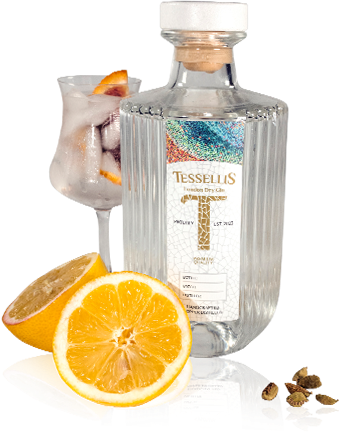Absinthe
Absinthe is usually a high-percentage alcohol, where the main botanical ingredients used are, the so-called holy trinity, aniseed, fennel and wormwood. It is from the Latin designation for wormwood Artemisia absinthium that the name absinthe was coined. Commonly referred to as the Green Fairy.
This alcohol originated on the border between France and Switzerland, at the turn of the 18th and 19th centuries. It became the most popular French drink and ruled French bars for more than a century, being particularly popularised during the Belle Époque period. At that time, so-called Absinthe Cafés were created, serving almost exclusively absinthe. At its peak, absinthe consumption in France amounted to 30 million litres a year.
Absinthe was the favourite alcohol of many artists, and was enjoyed by Vincent van Gogh, Eduard Manet, Ernest Hemingway, Picasso and Wyspiański, among others. In the early 20th century, many countries banned both the production and consumption of absinthe. The reason was thujone, the hallucinogenic compound found in wormwood. The Czech Republic, Spain and the UK never banned it, which is why many people associate the Czech Republic with absinthe, where it became very popular in its time.
In 1988, the European Union introduced guidelines allowing a maximum thujone content and it was then that legal production returned to France. In the US, the ban on absinthe lasted until 2007.
Types of absinthe:
Blanche - is a transparent, colourless absinthe. Bottled usually at a lower alcohol concentration, around 50%. Milder in taste, more delicate, less bitter.
Verte - is absinthe coloured green, indicating the maceration of botanical ingredients after distillation. Usually bottled at a high alcohol concentration, 60%+. More pronounced in flavour, more bitter.
Rouge - is pink absinthe, usually coloured with hibiscus flowers.
How to drink absinthe?
Absinthe should traditionally be diluted with very cold water and sometimes sweetened with sugar. When adding water, absinthe turns cloudy, milky and opaque. This is the so-called effect from fr. "louche". This is why absinthe is kept at a high alcohol concentration, the huge amount of essential oils that cease to be soluble in a lower % concentration is precisely what causes the turbidity effect. When we talk about drinking absinthe, the whole ritual is often mentioned. It involves the use of beautiful water fountains with taps, absinthe spoons on which sugar is placed, and specially dedicated goblets.
In the Czech Republic, the so-called fire ritual was invented, i.e. setting fire to a sugar cube previously drenched in absinthe, and the drinking of absinthe on so-called shots was popularised.





